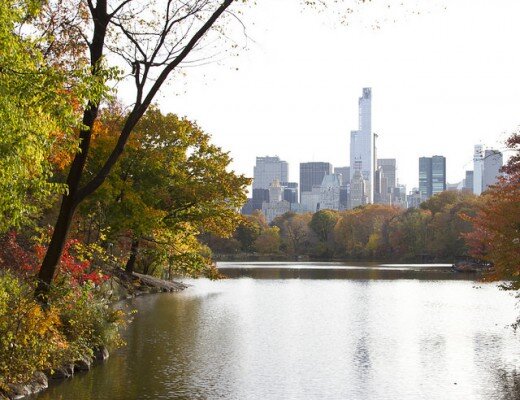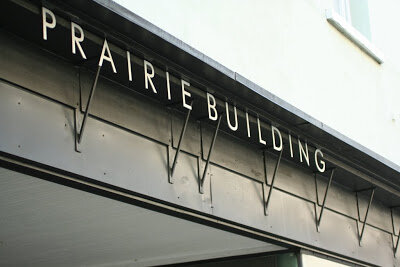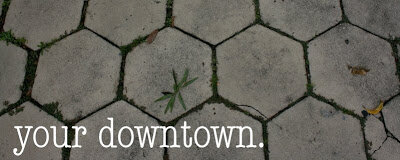 I’ve said before that I prefer my Easter eggs to be au natural. At the Goddard’s Barberry Hill Farm where James and I got married, they have chickens producing eggs in more beautiful shades than any dye could conjure. But when I saw these botanical blueprint tiles a few weeks ago, I decided to try my hand at recreating the look…on Easter eggs. I made a preemptive batch to share with you, in case you wanted to try them for yourselves.
I’ve said before that I prefer my Easter eggs to be au natural. At the Goddard’s Barberry Hill Farm where James and I got married, they have chickens producing eggs in more beautiful shades than any dye could conjure. But when I saw these botanical blueprint tiles a few weeks ago, I decided to try my hand at recreating the look…on Easter eggs. I made a preemptive batch to share with you, in case you wanted to try them for yourselves.
 Finding stark white eggs that are from chickens that have been treated kindly is a little tricky, but I managed to find a batch at a nearby market that met my standards. I hardboiled them before I began and plunged them into icy water afterward to stop them from cooking. Really nice instructions for hard-boiled eggs, at The Kitchn.
Finding stark white eggs that are from chickens that have been treated kindly is a little tricky, but I managed to find a batch at a nearby market that met my standards. I hardboiled them before I began and plunged them into icy water afterward to stop them from cooking. Really nice instructions for hard-boiled eggs, at The Kitchn.
 Next, I chose my botanicals. I wanted to experiment with a range of shapes and sizes so I bought a few stems from a local florist, pinched an end off my maidenhair fern and pilfered a leaf or three from another fern I spotted growing in the garden in front of my building.
Next, I chose my botanicals. I wanted to experiment with a range of shapes and sizes so I bought a few stems from a local florist, pinched an end off my maidenhair fern and pilfered a leaf or three from another fern I spotted growing in the garden in front of my building.  In general I found that the softer the leaf, the more successful the print. The small ferns that I thought were going to be perfect ended up producing a much less dramatic print than I expected. I think the problem was the stiffness of the leaves, which allowed dye to sneak its way underneath them instead of the leaf adhering itself to the shell.*
In general I found that the softer the leaf, the more successful the print. The small ferns that I thought were going to be perfect ended up producing a much less dramatic print than I expected. I think the problem was the stiffness of the leaves, which allowed dye to sneak its way underneath them instead of the leaf adhering itself to the shell.*  The maidenhair fern on the other hand, clung to the egg perfectly.
The maidenhair fern on the other hand, clung to the egg perfectly.  I used lengths of cut up white stockings as a way to hold the leaf to the egg during dyeing. I had the most success with using two rubber bands per egg and wrapping them up the way you might a butterscotch hard candy. It’s a slightly laborious process, but I’d developed a good technique by the time I wrapped my sixth egg.
I used lengths of cut up white stockings as a way to hold the leaf to the egg during dyeing. I had the most success with using two rubber bands per egg and wrapping them up the way you might a butterscotch hard candy. It’s a slightly laborious process, but I’d developed a good technique by the time I wrapped my sixth egg.  While I wrapped my eggs, I had a solution of red cabbage and water boiling away on the stove. In what can only be described as magic, red cabbage produces the most beautiful natural blue dye that you can imagine.
While I wrapped my eggs, I had a solution of red cabbage and water boiling away on the stove. In what can only be described as magic, red cabbage produces the most beautiful natural blue dye that you can imagine. To make the dye, chop up your cabbage (I started with just half and then opted to use the entire thing), and fill your pot with enough water so the cabbage has some room to move, but not so much that your dye will be too diluted. Make sure you use a stainless steel pot to avoid discoloration. This is not the moment to bring out your white enamel. Bring the mixture to a boil on the stove, and then allow the cabbage to simmer in the water for at least a half an hour. I left mine in a little longer, just to be sure.
To make the dye, chop up your cabbage (I started with just half and then opted to use the entire thing), and fill your pot with enough water so the cabbage has some room to move, but not so much that your dye will be too diluted. Make sure you use a stainless steel pot to avoid discoloration. This is not the moment to bring out your white enamel. Bring the mixture to a boil on the stove, and then allow the cabbage to simmer in the water for at least a half an hour. I left mine in a little longer, just to be sure.  When the water has become a deep reddish purple, remove the pot from the stove and let the whole batch cool. Sticking the pot outside for a little while will speed up the process. If you don’t let the dye cool, you’ll end up overcooking your eggs, so it’s worth the wait. Once cool, strain the dye with a large sieve.
When the water has become a deep reddish purple, remove the pot from the stove and let the whole batch cool. Sticking the pot outside for a little while will speed up the process. If you don’t let the dye cool, you’ll end up overcooking your eggs, so it’s worth the wait. Once cool, strain the dye with a large sieve.  Add white vinegar to your cooled dye at a ratio of one tablespoon vinegar for each cup of dye. Some recipes that I looked at have you add the vinegar while the cabbage is still cooking. I’m not sure if there are merits to doing it one way or the other. Any theories out there?
Add white vinegar to your cooled dye at a ratio of one tablespoon vinegar for each cup of dye. Some recipes that I looked at have you add the vinegar while the cabbage is still cooking. I’m not sure if there are merits to doing it one way or the other. Any theories out there?  Now is the time to dunk your little bundles! I poured my dye back into my original pot so that the eggs wouldn’t be on top of each other. I cleared a spot in the fridge and let the whole gang hang out in there overnight. The length of time you allow your eggs to sit in the dye bath will determine their color. If you’re hoping for more of a robin’s egg blue, you should take yours out sooner than I did. I was admittedly perplexed by recipes that advised merely dipping eggs in the dye bath. Dipping the eggs briefly resulted in no discernable color change in this kitchen. Slow and steady wins this race.
Now is the time to dunk your little bundles! I poured my dye back into my original pot so that the eggs wouldn’t be on top of each other. I cleared a spot in the fridge and let the whole gang hang out in there overnight. The length of time you allow your eggs to sit in the dye bath will determine their color. If you’re hoping for more of a robin’s egg blue, you should take yours out sooner than I did. I was admittedly perplexed by recipes that advised merely dipping eggs in the dye bath. Dipping the eggs briefly resulted in no discernable color change in this kitchen. Slow and steady wins this race.  Yesterday morning, when I unwrapped my eggs I was somewhat underwhelmed by the result. This is not a project for the perfectionists among us. But I’ve decided I like the subtler, softer look. Even if the prints are not crystal clear, they’re still awfully pretty. Next year I think I might forgo the botanicals and opt for a cheery rainbow of turmeric, beet, and red cabbage dyes instead.
Yesterday morning, when I unwrapped my eggs I was somewhat underwhelmed by the result. This is not a project for the perfectionists among us. But I’ve decided I like the subtler, softer look. Even if the prints are not crystal clear, they’re still awfully pretty. Next year I think I might forgo the botanicals and opt for a cheery rainbow of turmeric, beet, and red cabbage dyes instead.  I found the following two articles to be especially helpful in making my eggs: Vibrant Eggs, Dyed Naturally for dye-making and Masked Easter Eggs for the stocking tip, because it turns out there’s nothing new under the sun.
I found the following two articles to be especially helpful in making my eggs: Vibrant Eggs, Dyed Naturally for dye-making and Masked Easter Eggs for the stocking tip, because it turns out there’s nothing new under the sun.
*Admission: I did neglect to adhere my leaves to the egg shells using egg whites as Martha Stewart advises…for shame. There’s always next time.




37 Comments
These are unreal! Such a beautiful blue, and I love the natural "stencils." Does the egg inside turn blue?
Thanks, Cara! The eggs turned *slightly* bluish in spots, but nothing write home about! Suffice to say, the egg salad we enjoyed from them was yellow!
beautiful! I can't wait to try! Thank you for sharing. I love your images.
these look beautiful.
Erin, they are beautiful!
I am wondering, if I hollowed out the eggs and varnished them after dying, could I make these permanent?
Hi Lisa-Marie, I've made hollowed-out eggs before, but I've never experimented with varnish. I imagine some people use that technique!
So gorgeous! Your blog is one of the absolute best. Thank you for sharing glimpses into your life with us.
Thanks, Lesley!
These are so awesome! I admire your tenacity 🙂
Note that I did *not* make a dozen 😉
I remember coloring eggs when I was younger but have never tried it the more natural way! I like it! I might have to give it a try this year!! I love how you used the leaves as stencils!
Ergo – Blog
Beautiful! I have dyed eggs with coffee grounds and turmeric as well. The coffee yielded a beautiful soft brown and the turmeric was vibrant yellow. I love dyeing eggs with food…
Wow! Those are beautiful. My mom and I always dyed eggs by boiling onion peel.
How very creative with pertinacity, ideal for Easter! I dread to attempt such a thing but enjoy watching/reading the process of it. 🙂
such a pretty and inspiring post to read on this gloomy monday morning!
They turned out very pretty and unique!
Love the use of natural dyes! Have you seen the Chinese tea eggs? Tea is a great natural dye too!
Wow, what a stunning color! In Croatia, I learned to dye eggs using red onion peels, like Olga mentioned. They create such a beautiful deep reddish brown.
They are beautiful. I will be posting about something similar next week. Looking forward to seeing how mine turn out.
xoxo
Mags
http://magsmind22.blogspot.com
This is beautiful! Easter decorations aren't really a 'thing' here, but these are too sweet to pass up, and I might just have to buck the trend and decorate our house for spring anyway!
How awesome! I had no idea you could use veggies as a natural dye! That is so so cool, I definitely want to try that. Even though the outlines don't show clearly, it really is still very pretty!
I have never seen this method of egg-dying before! Simply lovely.
so beautiful!!!!!
Simply stunning!
Am I the only one still flabbergasted that a purple cabbage will turn them blue and not, uh, purple? I am so intrigued!
fibreandspice.wordpress.com
Oh I am in love with these! And I agree with you that the subtle prints are rather pretty – they look a little like cyantype prints!
Beautiful! I love how you used natural elements to make these. This week should be fun. Everyone is sharing their eggs and it's so inspiring. I shared my eggs today too =)
Oh! The blue is so gorgeous! Thank you for sharing!
Those are so pretty, and I wish I could make them too! I even felt tempted to spend a class teaching my students how to make these eggs; I'm sure they wouldn't mind a break from one of my lectures. 🙂
What a fun project, with beautiful results. I might have to round up my niece and nephew for something like this. Can't remember the last time I colored eggs (and for sure it was not with natural coloring all those years ago!)
These are absolutely gorgeous!
I just love this idea – so stunning.
This is so incredibly beautiful. I haven't made easter eggs in eons (or so it feels) but I'm tempted to follow your tutorial and make these.
Absolutely amazing! I've been looking for different Easter projects to do and this seems lovely and so beautiful! Thank you so much for this tutorial!
So cool, definitely inspired by your egg-work!
You can rub the eggs with a bit of butter or bacon rind for a bit of shine.
We used to wrap the uncooked eggs in onion skins and then wrap them tightly in old tights – once boiled in the water the skins leave a lovely pattern and dye the egg brown.
I have been coloring easter eggs like this for years! You can take a stoking with a hole in it and use it for wrapping. I remember saving those stockings specifically for this project)
Comments are moderated.